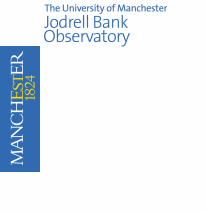

1st - 5th October 2007, University of Manchester
Public Lecture: 100 years of Radio Astronomy: A Future Perspective
Abstract
Looking back from the year 2030, I review a century of breakthroughs in radio astronomy. It was a century that began with pioneering work in early 1930s, blossomed in the post-war period with the construction of major observatories including Jodrell Bank, and culminated in the construction and operation of the continental-scale Square Kilometre Array radio telescope. Over those 100 years, radio astronomy has resulted in more than five Nobel Prizes; playing a key role in discovery of pulsars, quasars and the radiation from the Big Bang. For a general audience, I will describe these discoveries, the telescopes they were made with and the impact they had had our understanding of our place in the Universe.
Brian's public lecture will be held in the Reynold's Building Lecture room from 19:00 - onwards, Tuesday 2nd October. All delegated at the MRU conference and members of the public alike are invited to attend.
Biography
Professor Brian Boyle is currently Director of CSIRO's Australia Telescope National Facility, responsible for operating Australia's major radio astronomy telescope including the Parkes radio telescope and the Australia Telescope Compact Array at Narrabri in NSW. He is also involved in the international project to build the next generation of radio telescope, 1 billion Euro Square Kilometre Array - a continent-scale radio telescope 50 times more powerful than any existing radio telescope.
Professor Boyle completed his PhD at the University of Durham in the UK. He held positions at the University of Edinburgh, the Anglo-Australian Observatory, the University of Cambridge and was Director of the Anglo-Australian Observatory from 1996 to 2003, prior to his appointment to the ATNF in July 2003. Professor Boyle's research interests have included quasars, active galaxies, gamma ray bursts and supernovae - most things that go bump in the night. He has published over 250 research papers in astronomy and was elected to the Australian Academy of Sciences in 2005.
Brian is married with two teenage boys. He enjoys bushwalking, playing the piano, barracking for the Sydney Swans and being enthusiastic about astronomy at public lectures.
 |
 |
 |
 |
 |
 |
